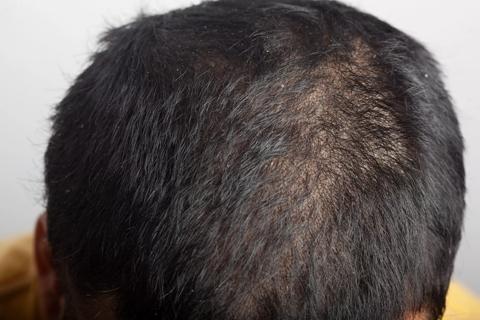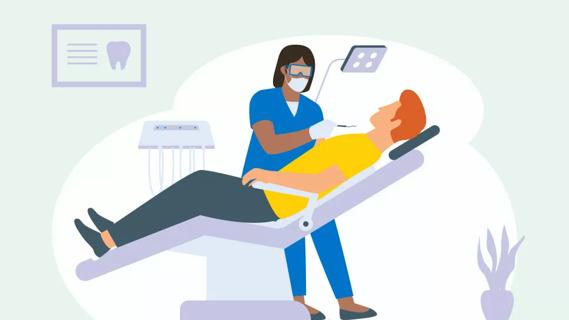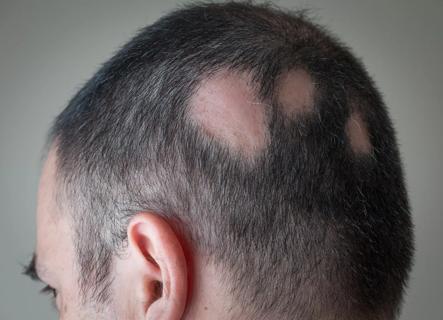Advertisement
Research shows some associations and concerns, but no definitive connections

Wanting different-colored hair is nothing new. In ancient Egypt, henna dye was used to highlight hair (or cover unwanted grays). Hair dye found its way onto the heads of people in ancient Greece, too.
Advertisement
Cleveland Clinic is a non-profit academic medical center. Advertising on our site helps support our mission. We do not endorse non-Cleveland Clinic products or services. Policy
But while the goal of getting a new look has been around for many millennia, the method has certainly changed. Natural ingredients behind those old dye methods have been largely replaced by chemicals — including some linked to increased cancer risk.
So, does that mean modern hair dyes can be bad for your health? Let’s look at the research with radiation oncologist Chirag Shah, MD, and medical oncologist TiffanyOnger, MD.
Changing your hair color isn’t easy. Want proof? Consider this: It can take more than 5,000 chemicals for hair dye to get the job done.
The list features known carcinogens, or substances that can cause cancer. These chemicals can disrupt the actions and levels of hormones in your body and elevate cancer risk, says Dr. Shah.
Concerning chemicals include aromatic amines, 3-amino-4-methoxyaniline, 2-nitro-4-aminoaniline and 3-nitro-4-hydroxyaniline.
Permanent hair dyes, which make up about 80% of the market, typically have more chemicals than semi-permanent and temporary hair dyes. Darker hair dyes often have higher concentrations of chemicals and carcinogens, too.
Various studies over the years have investigated potential connections between hair dye and different types of cancer, such as:
“There are obvious concerns,” says Dr. Onger. “The reality is that people are applying hair dyes to their scalp, and we know those hair dyes include chemicals. That’s why there has been so much research.”
Results of those studies have been mixed, with some associations found.
But overall, the International Agency for Research on Cancer (IARC) with the World Health Organization (WHO) has determined that personal use of hair dye “is not classifiable as to its carcinogenicity to humans.” (That’s a fancy way of saying there are no actionable links.)
It should be noted, however, that the IARC did find increased risk for hairdressers or barbers who are in more frequent contact with hair dyes. The agency listed that sort of on-the-job exposure as “probably carcinogenic.”
Let’s look at the connections and risk by cancer type.
Advertisement
Most studies haven’t detected an increase in bladder cancer risk for those who get their hair dyed, according to the National Cancer Institute. But there have been a few concerns raised about the use of permanent hair coloring.
Risk levels for bladder cancer do appear to rise if you work with hair dye on a regular basis.
A relatively large National Institutes of Health study in 2019 examined the relationship between breast cancer and the use of hair dye and chemical hair straighteners. The Sister Study involved more than 45,000 women.
Researchers found that:
Some research has suggested that semi-permanent hair dye may affect breast cancer risk as well. Interestingly, the Sister Study showed mixed results on usage.
While semi-permanent dye wasn’t connected with higher risk overall, those who used semi-permanent dye themselves — without the assistance of a professional hairstylist — had an association with breast cancer risk.
When it comes to chemical hair straighteners, the Sister Study found some increased breast cancer risk. (Some of these straighteners contain formaldehyde, a known carcinogen.)
Straightener use in the 12 months before enrollment in the study was associated with an 18% higher breast cancer risk. More frequent use brought higher risk, too. For example, those who used straighteners every five to eight weeks had a 31% higher breast cancer risk.
“Not statistically significant” sums up much of the research results involving hair dye and the risk of other cancers, such as non-Hodgkin lymphoma, leukemia and uterine cancer.
Every single day, you’re exposed to many things that are potential cancer risk factors. Hair dye is just one item on the list, say Dr. Shah and Dr. Onger.
If you’re concerned about your risk of cancer, look at all of your risk factors when making decisions. Talk to your healthcare provider about your lifestyle, home and work environments, and family history so you can decide what’s best for you.
Hair dye can certainly be part of that discussion — but it shouldn’t be the only thing.
Advertisement
Learn more about our editorial process.
Advertisement

While there’s little risk in trying this hair care treatment, there isn’t much science to back up the claims

Calm an itchy scalp by using medicated shampoo, avoiding blow-drying and resisting the urge to scratch

Lanugo — the soft, fine hair that develops in utero — is harmless and will shed within a few weeks

If you have naturally red hair, feeling the pain may be in your DNA

A gentle hair care routine, stress reduction and sun protection can help reduce flares and maintain your locks

Home remedies may help your hair, but don’t expect them to cure the autoimmune disease

Working has its benefits, but it may require some modifications — and that’s OK

Pantothenol is a powerful moisturizer and can help repair damaged skin and hair

Focus on your body’s metabolic set point by eating healthy foods, making exercise a part of your routine and reducing stress

PFAS chemicals may make life easier — but they aren’t always so easy on the human body

While there’s little risk in trying this hair care treatment, there isn’t much science to back up the claims